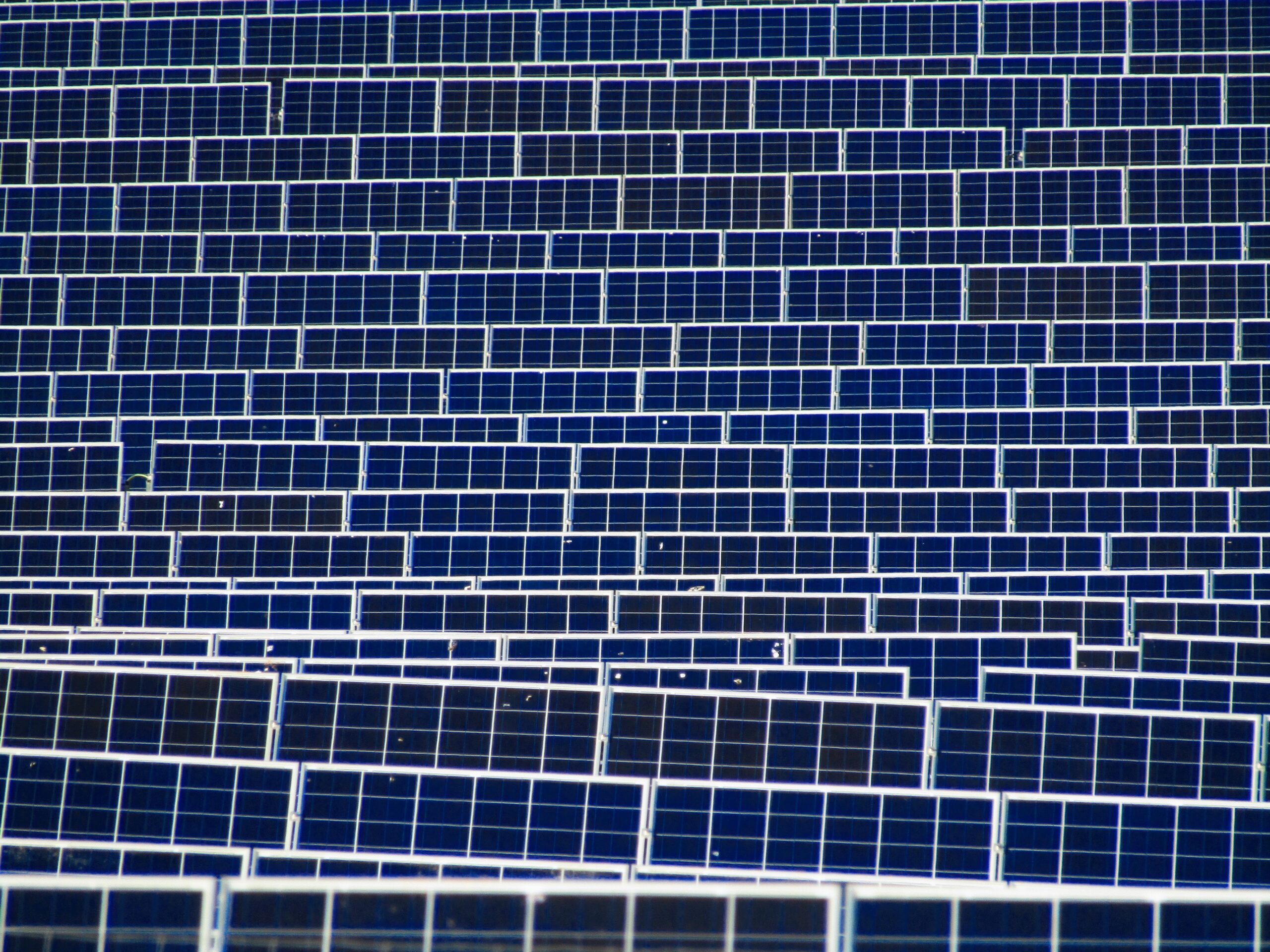
How Recycling Can Keep Solar Panel Waste from Becoming a Serious Problem
| August 9
What happens to solar panels after serving their purpose?
Researchers have determined that to meet global decarbonization goals for 2050, solar must grow over 7,000%.
Nonprofits have an important role in this effort. By going solar, nonprofits can also save money on their electric bills that can be redirected to their crucial missions.
Achieving this exponential growth will take a lot of solar panels. Many millions of panels have already been installed in the U.S., and millions more are yet to come. Although solar panels last a long time, most projects are expected to have a 25–30 year useful life. Some can last many years longer, but eventually at the end of a project’s life cycle, the panels need to be removed and potentially replaced. Even before that, some panels may be damaged during transportation and construction, or after they’re installed.
What do we do with all those used panels?
Climate change is a serious problem that we must solve. But the last thing we want to do is create another environmental problem by solving this one. We need to find sustainable ways to reduce solar waste.
The State of Solar Recycling
The good news is that solar panels are very well suited for recycling — and in some cases, even reusing.
Many of the components in solar panels can be extracted, such as their metal framing, glass sheets, copper wiring, and silicon solar cells. Using both mechanical and chemical processes, the panels can be broken down into these components for reuse.
Recycling startup SolarCycle is already showing what can be done, using an electrostatic process that separates the particles in solar panels by mass and electrical properties. SolarCycle recently raised $30 million in funding to achieve its short-term goal of recycling 1 million panels per year, with plans to expand that to millions of panels annually. The company says it can recycle a full 95% of the materials in solar panels, very high for any kind of recycling. SolarCycle also identifies panels that are in good enough shape to be refurbished and reused, which should always be the first step before recycling.
For now, SolarCycle is one of just a few solar recycling companies in the U.S. — unlike in Europe, where solar end-of-life mandates have created a market for recycling. But more companies are starting up here in the U.S. as well.
Our current efforts are still falling short, with only about 10% of panels being recycled in the U.S. Fortunately, market forces combined with new regulations could soon change this picture. As the public and the industry increasingly focus on recycling, many more options are becoming available. While there is no federal solar recycling mandate yet, some states are passing legislation to deal with solar panel waste.
Benefits of solar recycling
Driving this market transformation are the many benefits of recycling solar panels.
Recycling solar panels affects every part of the solar life cycle. A 2021 National Renewable Energy Laboratory (NREL) report found that in addition to cutting waste, solar panel recycling increases supply chain stability and lowers the cost of raw materials. Growing this industry will also create many new jobs. Here’s a breakdown of the benefits:
Reducing landfill waste. The most obvious solar recycling benefit is keeping waste out of landfills. Heavy metals in some solar panels, like cadmium and lead, can be harmful to the environment and human health if released in landfills. But even if no chemicals are leached from discarded panels, it’s always preferable to limit what we deposit in landfills.
Easing supply chain bottlenecks. NREL found that by 2040, solar panel recycling could satisfy 25–30% of our nation’s solar manufacturing needs for valuable materials like silver, aluminum, copper, and silicon. Given that supply chain constraints have been a significant barrier to deploying more solar, putting these materials back into the domestic supply chain will be very good news for the industry.
Limiting mining and carbon emissions. Recycling reduces the need for mining and saves energy. According to SolarCycle, recycling aluminum frames for solar panels allows new frames to be created using 95% less energy than it takes to make them from mining. That also lowers carbon emissions from the solar panel manufacturing process.
Enhancing ESG goals. Recycling solar panels can support a company’s Environmental, Social, and Governance (ESG) program by avoiding waste and carbon emissions. Companies like SolarCycle track the impacts of the recycling process, such as landfill avoided and emissions reduced, allowing companies to better quantify their impact.
Creating jobs. As facilities are built across the nation, the solar recycling industry is poised to create many new jobs. With the global solar recycling market projected to reach $2.7 billion by 2030 and $80 billion by 2050, the industry will need quite a few new workers.
Reducing solar construction waste. Solar recycling isn’t just about a project’s end of life. Construction projects also generate waste, including wooden pallets and damaged panels. Companies like Green Clean Solar are emerging to help developers identify and deal with construction waste materials that can be recycled, repurposed, reused, or sold to secondary markets.
Reducing costs. This one is still somewhat aspirational, but recycling will get more cost-effective as it ramps up. Some solar developers are already finding that they can break even or save money by implementing a well-designed recycling program. For solar construction waste, recycling can potentially offset the costs of dumpsters, hauling, and landfills.
This short video provides a great overview of the solar recycling process and how one company is already implementing it:
The future looks bright for solar recycling
Solar panels last at least 25–30 years, with many going strong for much longer. By the time projects being installed now are at the end of their life cycle, we expect to see even more recycling options available.
To ensure that this happens, now is the time to create the necessary infrastructure and tools. Various organizations are already on the case. The Solar Energy Industries Association (SEIA) maintains a national network of recycling partners that they can connect with solar developers, and SEIA’s working group is building out the solar recycling infrastructure we need to support the growing solar industry. The DOE’s Solar Energy Technology Office (SETO) is providing funding to research solar reuse and recycling, with $20 million announced recently for this effort. The EPA maintains resources on the end of life of solar panels.
It all starts with how panels are made, and manufacturers are being pushed to make panels easier to recycle and to reduce packaging. The price of recycling must come down, which is likely to happen when more companies are competing for business and recycling methods are streamlined. The U.S. also needs stronger policies to support solar recycling at both the federal and the state level.
With the renewed focus on solar panel recycling, the market is ramping up quickly. This is good news as more people embrace clean energy and share in its goal of replacing fossil fuels in the most environmentally sustainable ways possible.






